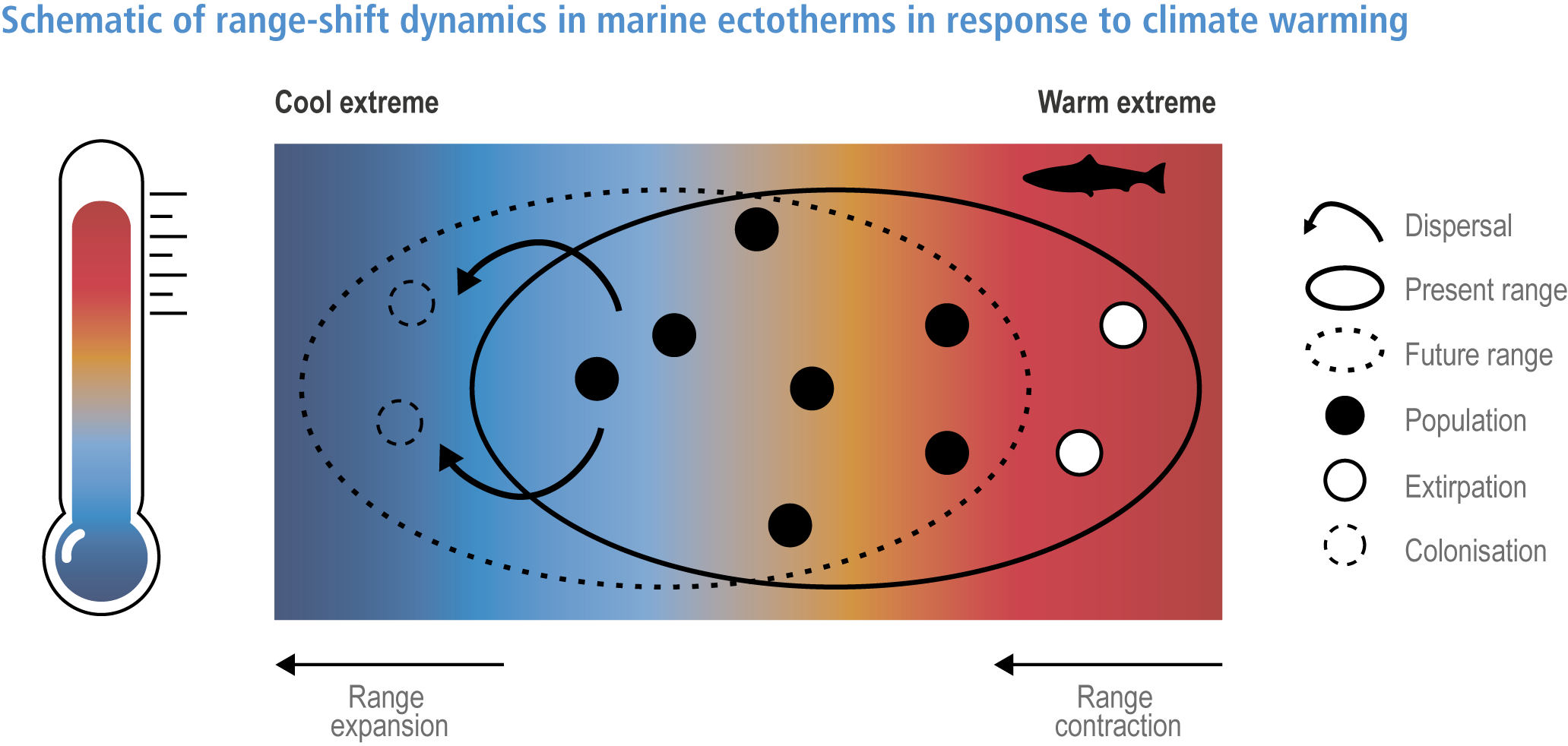Figure 3.15
Figure caption
Figure 3.15 | Range-shift dynamics in marine ectotherms in response to climate warming. As the ocean warms, conditions at the edge of the species’ distribution may become warmer than the maximum thermal tolerance of the species (Figure 3.9), causing local populations to undergo a gradual decline in performance, a decreasing population size and ultimately their extirpation, resulting in a range contraction. Conversely, at the cool extreme of the distribution, habitats beyond the current range of the species will become thermally suitable in the future (i.e., within the species’ thermal tolerance range) and, providing the species can disperse to those locations, allow for the colonisation and consolidation of new populations and subsequent range expansion. These are processes conditioned by multiple drivers that interact with warming to ultimately define range-shift responses, some of which are described in Table 3.17. Note that physiological thermal tolerances relate to body temperatures of the organism rather than ambient temperatures.
